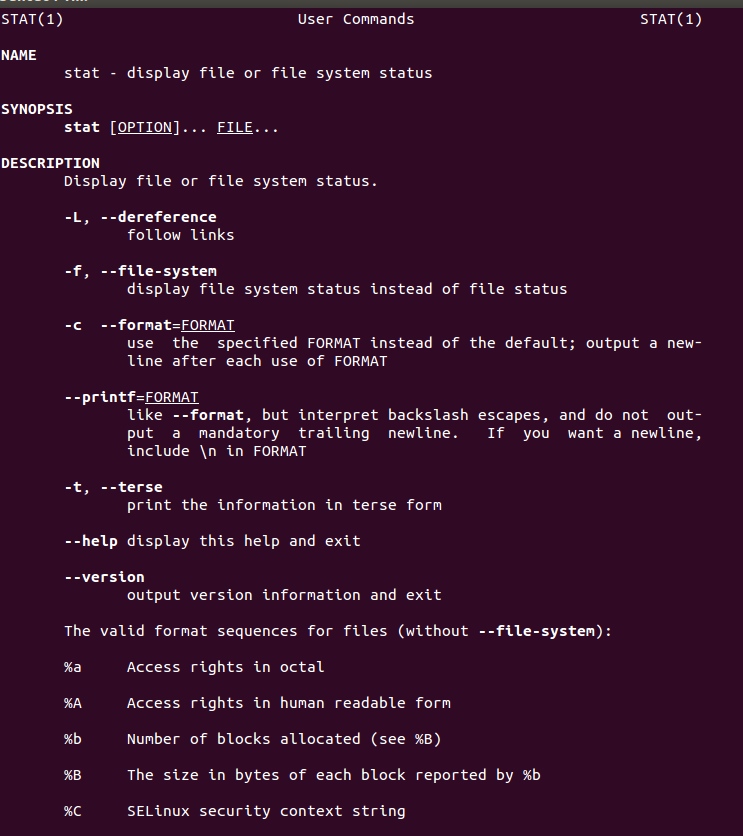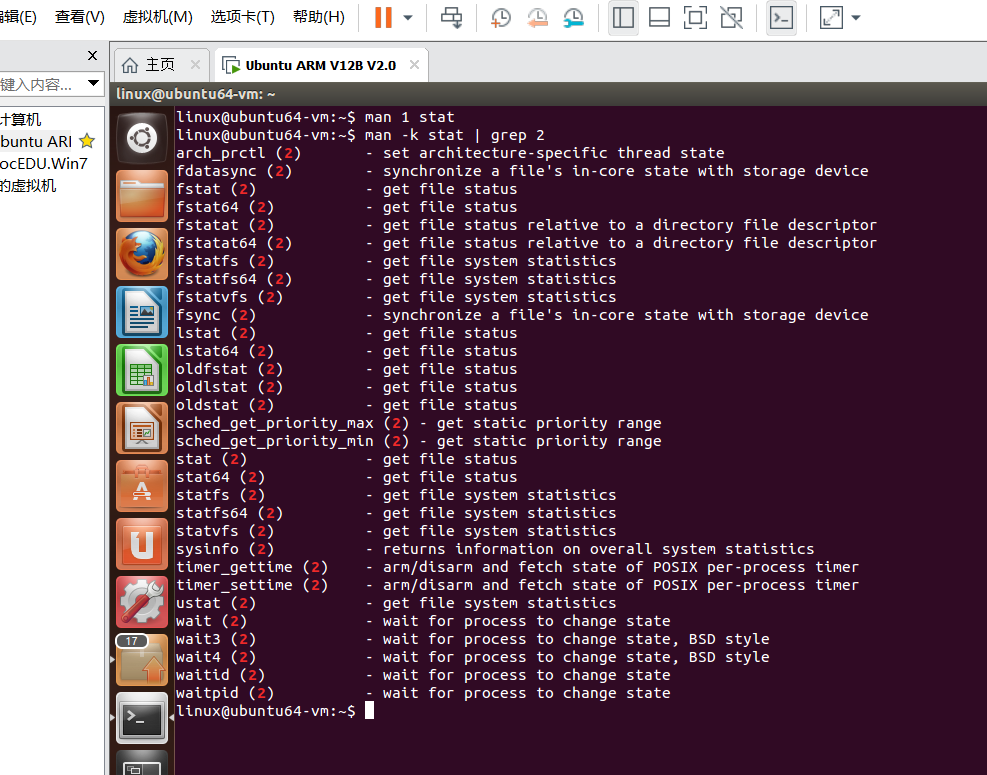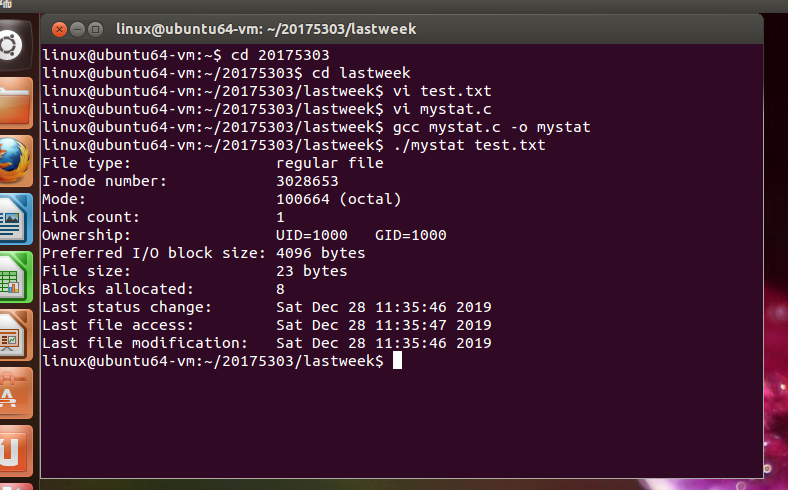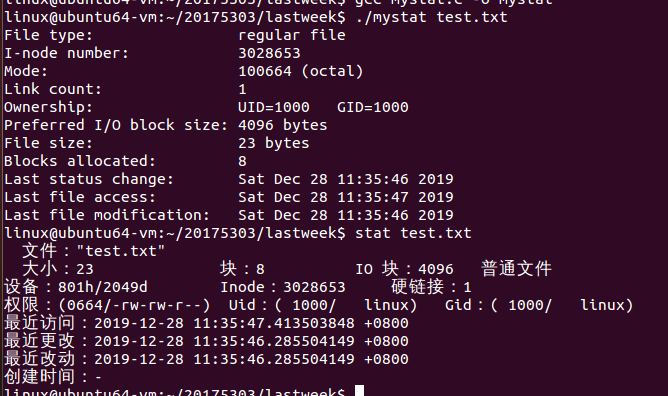stat命令的实现-mysate(必做)
stat命令的实现-mysate(必做)
任务要求
学习使用stat(1),并用C语言实现
- 提交学习stat(1)的截图
- man -k ,grep -r的使用
- 伪代码
- 产品代码 mystate.c,提交码云链接
- 测试代码,mystat 与stat(1)对比,提交截图
实现过程
1.提交学习stat(1)的截图

- stat命令作用:展示文件或文件夹的身份或状态
- stat各项参数及功能:
-L:显示符号链接
-f:显示文件所在的文件系统信息
-t:以简洁的方式输出摘要信息 - stat使用实例:
查看文件的详细信息:stat /文件目录
查看文件系统的详细信息:stat -f /文件目录
查看简洁输出(脚本中常用来获取想要的信息):stat -t /文件目录
八进制文件权限(shell脚本时会用到):stat -c "%a" /文件目录
2. man -k ,grep -r的使用
-
使用 man -k stat | grep 2 查找stat相关函数

-
使用 man 2 stat 学习函数

3. 伪代码
调用函数stat()
打印输出节点ino、
文件类型mode、
文件的连接数nlink、
用户ID uid和组ID gid、
块大小blksize、
字节数size、
块数目blocks、
三个时间atime、mtime和ctime
4.产品代码 mystate.c
#include <sys/types.h>
#include <sys/stat.h>
#include <time.h>
#include <stdio.h>
#include <stdlib.h>
int main(int argc, char *argv[])
{
struct stat sb;
if (argc != 2) {
fprintf(stderr, "Usage: %s <pathname>\n", argv[0]);
exit(EXIT_FAILURE);
}
if (stat(argv[1], &sb) == -1) {
perror("stat");
exit(EXIT_FAILURE);
}
printf("File type: ");
switch (sb.st_mode & S_IFMT) {
case S_IFBLK: printf("block device\n");
break;
case S_IFCHR: printf("character device\n");
break;
case S_IFDIR: printf("directory\n");
break;
case S_IFIFO: printf("FIFO/pipe\n");
break;
case S_IFLNK: printf("symlink\n");
break;
case S_IFREG: printf("regular file\n");
break;
case S_IFSOCK: printf("socket\n");
break;
default: printf("unknown?\n");
break;
}
printf("I-node number: %ld\n", (long) sb.st_ino);
printf("Mode: %lo (octal)\n",(unsigned long) sb.st_mode);
printf("Link count: %ld\n", (long) sb.st_nlink);
printf("Ownership: UID=%ld GID=%ld\n",(long) sb.st_uid, (long) sb.st_gid);
printf("Preferred I/O block size: %ld bytes\n",(long) sb.st_blksize);
printf("File size: %lld bytes\n",(long long) sb.st_size);
printf("Blocks allocated: %lld\n",(long long) sb.st_blocks);
printf("Last status change: %s", ctime(&sb.st_ctime));
printf("Last file access: %s", ctime(&sb.st_atime));
printf("Last file modification: %s", ctime(&sb.st_mtime));
exit(EXIT_SUCCESS);
}
运行成功截图

5. 测试代码,mystat 与stat(1)对比,提交截图




